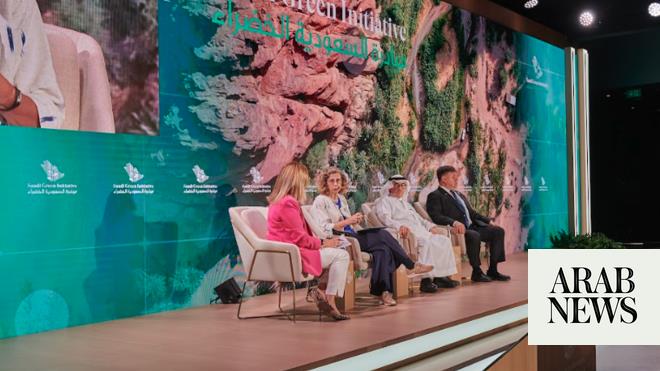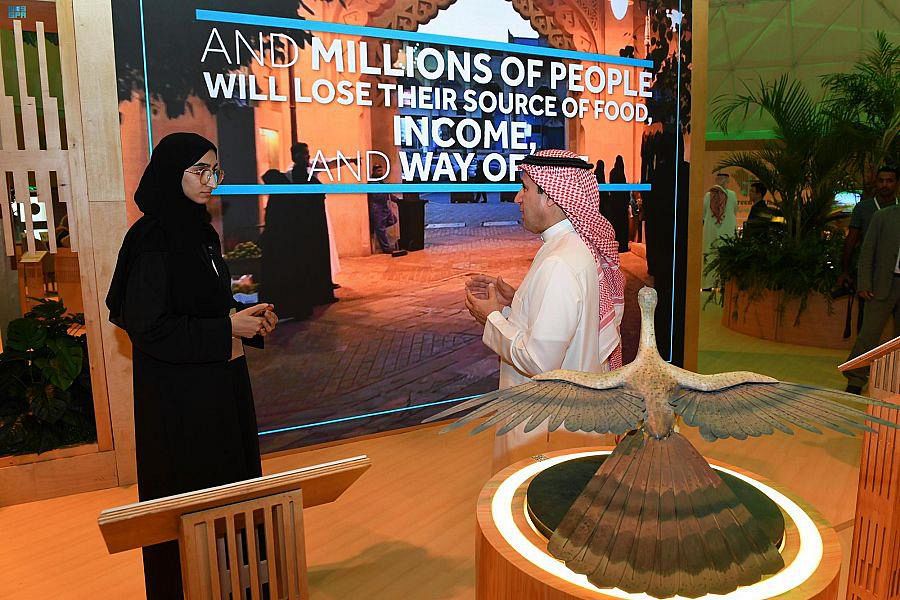
DUBAI: Saudi Arabia marked World Energy Day on Monday with an accomplishment: it has jumped one spot on the Arab Energy Efficiency Index in the past two years. Developed in partnership with the United Nations Development Program (UNDP) and the Regional Center for Renewable Energy and Energy Efficiency, the index is the first native Arab index dedicated to monitoring sustainable energy competitiveness in the region. The index is also said to help accelerate the implementation of energy efficiency activities in the region. “The entry into force of the Paris Agreement on Climate Change and the Sustainable Development Goals (SDGs) has helped raise issues of climate change and sustainable energy up the policy agenda,” said Khaled Abdelshafi, director at the UNDP regional rub for Arab states in the region.
“A series of new sustainable energy strategies have arisen in recent times, meant to reduce the energy intensity of growth and enhance the resilience of development. In the Arab region, low-carbon, sustainable energy can play an important part of recovery from crisis, reducing poverty, expanding education and improving health outcomes.”
Based in Cairo, the inter-governmental Regional Center for Renewable Energy and Energy Efficiency works within the region with 17 member states, including Saudi Arabia and the UAE, among others.
“We built our work on the knowledge that we gained throughout our work partnering with our countries, leading the region towards sustainable development through the energy sector,” said Rawad Rizk, the center’s sustainable energy specialist. “Our mission is to be aligned with international practice and driving the energy transition to contribute to a better life for our people.”
Focusing on new trends in the market, the center works on different topics ranging from the environment, climate change, standardization services, policy support as well as knowledge management, private sector support and the social and economic impact of projects related to renewable energy and energy efficiency.
“Within the pan-Arab energy guidelines, which we started in 2009, we asked countries to start working on their national energy efficiency action plans,” he said. “This work has been grown and developed in a way that we created this system, and the pan-Arab sustainable energy strategies will be finalized very soon, including renewable energy, energy efficiency and energy access. The reporting mechanism is vital to monitor progress and to always track a way towards the targets designed.”
Countries were ranked in the index based on their development in renewable energy and energy efficiency, energy prices, policy frameworks as well as strategies and action plans. “In terms of primary energy consumption, the Arab region is still very heavily dependent on fossil fuels, where oil and gas make up more than 98 percent of that consumption,” Rizk explained. “When we look at energy and electricity consumption per capita in the region, GCC countries are among the top consumers, mainly due to the high energy subsidies, high oil and gas reserves and high income.”
He used Tunisia as a prime example for energy efficiency, where consumption is relatively low compared to the Gulf. The country also aims to reduce energy consumption by 17 percent by 2020 and 30 percent by 2030.
For the Gulf, greenhouse gas emissions proved to be a significant issue, with countries such as Kuwait, Qatar, Saudi Arabia and the UAE holding the highest regional levels per capita. Qatar emitted the highest worldwide in 2013 at 37.8 metric tons per capita, while the Kingdom reached 17.1 metric tons per capita.
The report identified an energy mix almost completely based on fossil fuels. “Greenhouse gas emissions in the Arab region increased by around a gigaton in the last 15 years, and increased at a fast rate of around 5.3 percent a year,” Rizk said. “On the other hand, Tunisia witnessed relatively slower growth in greenhouse gas emissions, around 3.4 percent per year.”
Energy subsidies, including electricity and fuel, remain a significant barrier for consumers in terms of energy efficiency investment in the region. “They’re very expensive throughout the region, especially in the Gulf,” he added. “But nonetheless, the region did witness an unprecedented wave of subsidy reforms, especially after 2013. Most subsidies are found in oil-exporting countries and reforms increased between 2016 to 2017 from six to 11 countries, which is unprecedented in the Arab region.”
Almost all 20 Arab countries surveyed witnessed an increase in electricity peak demand by more than 10 percent from 2013 to 2016. Nuclear energy is said to help meet that rising demand in the future, with Saudi Arabia planning to build 16 nuclear power plants with a total output of 17 gigawatts by 2032.
Rizk spoke of the importance of developing and implementing energy efficiency strategies. “The key element studied is the availability of governments to have a clear intent and commitment for energy efficiency improvement, a long-term focus on an energy efficiency objective, as well as a dedicated energy efficiency agency for planning and designing measures in the field, while having dedicated funds to reaching those targets,” he explained.
“As of 2017, 15 of 20 Arab countries developed or are implementing national energy efficiency action plans and 17 have dedicated energy efficiency agencies or units in their ministry.”
Overall, the Kingdom is halfway there, having ranked 10th out of 20 countries, following Tunisia, Jordan, Morocco, the UAE as well as Palestine, Egypt, Lebanon, Algeria and Bahrain. Its total score was 50 percent, based on scores in other categories such as 16 percent in energy pricing, 60 percent in policy framework (energy planning), 70 percent in institutional capacity (the ability to implement the policies) and 58 percent in utility (the efficiency of power generation, transmission and distribution systems).
“As with several other Arab countries, Saudi Arabia’s energy efficiency efforts indicate slow but positive signs of progress and improvement,” read the report. “Energy prices are heavily subsidized, with Saudi Arabia having some of the lowest gas and diesel prices in the Arab region. Thus, a reduction in energy subsidies is a vital area for improvement.”
It noted two significant advancements in terms of energy efficiency scoring in the country. The first is the adoption of its National Energy Efficiency Program (NEEP), and the second is the implementation of the Kingdom’s broad-sweeping plan Vision 2030, which has an integral component on energy sustainability. “These two initiatives have greatly improved energy planning in Saudi Arabia, which previously scored well below the regional average in the 2015 index.”
As Saudi Arabia and Egypt are the two highest electricity consumers in the Arab region, consuming nearly 47 percent of the region’s total electricity, energy efficiency initiatives are an important opportunity for energy saving in the lighting sector. What’s more, the GCC is expecting a 7.3 percent growth rate increase in the market for air conditioning, especially as the region prepares to hold Expo 2020 Dubai and the 2022 FIFA World Cup in Qatar.
“The biggest thing Saudi did was the strategy as well as energy labelling,” Rizk said. “They have a dedicated energy efficiency agency, which is the Saudi Energy Efficiency Center, and they discouraged inefficient appliances, when they banned all inefficient air conditioning. They also have very rigorous energy efficiency awareness campaigns.”
According to the Kingdom’s NEEP, the country is planning a 30 percent reduction in electricity intensity between 2005 and 2030. In 2008, eight priority objectives were defined in the program, including energy audit services and industry support, efficient use of oil and gas, energy efficiency labels and standards for appliances, constructions codes, training and public awareness.
The NEEP currently focuses on four outcomes, including regulation, with the design of the first Energy Conservation Law as well as national and regional regulations; and information, with a new national database on energy supply and demand, as well as public awareness on energy conservation.












